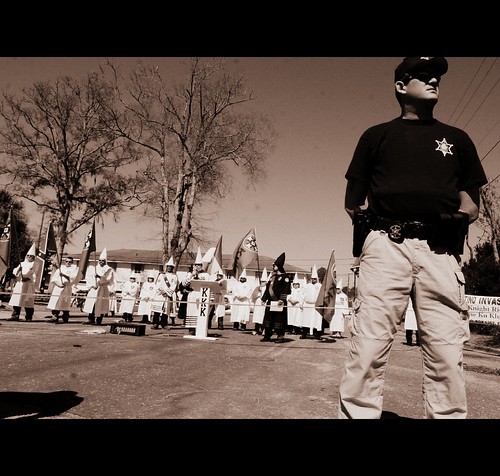According to the FBI, crime rates have consistently fallen for the last five years; with the crime rate falling by 4% alone this past year. The trend tends to fly in the face of conventional wisdom that crime rates rise during economically distressed times, and crime rates go down when times are good. Sociologists have cited a number of trends that have had an effect on lowered crime rates citing tougher sentencing laws, improvements in law enforcement tactics, and even video games keeping more of the younger population indoors. However, one area of crime that has remained steady in the last two years is hate crimes.
What is a Hate Crime?
A hate crime is a violent crime that is motivated by a certain bias toward a perceived race, religion, or sexual orientation. Hate crimes also involve people with disabilities, class and gender. Essentially, people who commit hate crimes target people who are perceived as being the “other;” however that difference is defined. Hate crimes often have horrible outcomes since they can involve physical and sexual assault, as well as property damage. The violence is often intended to send a message to, not only the individual, but the group as a whole. It can have damaging psychological consequences that is very difficult for the justice system alone to address, and other groups not related to the targeted group can feel uneasy and afraid as a result of hate crimes.
In the Past
Historically in the United States, African Americans have been the target of the majority of hate crimes. Of the 8,208 hate crimes that were reported by the FBI in 2010, 48.2% of those crimes had racial underpinnings, and a whopping 70% of those targeted were African Americans. The moral underpinnings of hate crimes represent a significant part of the history of the United States from its days as a slave nation to the broken efforts of the Reconstruction following the Civil War and finally to the Civil Rights Movement of the 1960’s. Although the brutality of hate crimes targeting racial minorities may seem to some as a product of the turmoil following the Civil War, as recently as 1998 James Byrd Jr, a black man living in Texas, was targeted by White Supremacists and murdered by being dragged behind a pickup truck.
New Laws are Adopted
Although it took this incident for the State of Texas to pass strong Hate Crime Legislation, the very first Federal hate crime legislation was passed in 1871, which made it a federally punishable crime. This was in part legislated to combat the racial violence that was plaguing the nation following the Civil War by groups like the Klu Klux Klan. However, it was not until 1968 with the passage of the Civil Rights Act that minorities were protected from hate crime violence for political activities. California was the first state to pass its own hate crime legislation, and there are currently 45 states that have hate crime statutes on their books.
Change is Needed
The fact that hate crime statistics have remained steady should serve as a sober reminder that race is still a difficult issue in the United States. A recent data visualization of racist tweets in the United States following the election shows racist tweets coming from every metropolitan area in the United States. Although many of them are centered in the South, their dispersion across the country should give anyone concerned with hate crimes pause.
Gary Leonard writes for several education sites and suggests a master’s degree in criminal justice as an exciting career.
